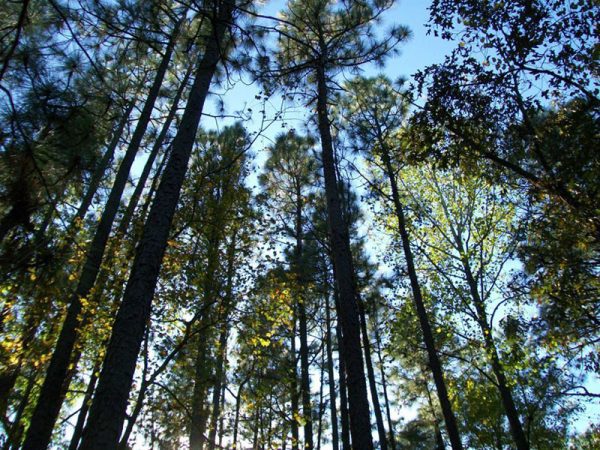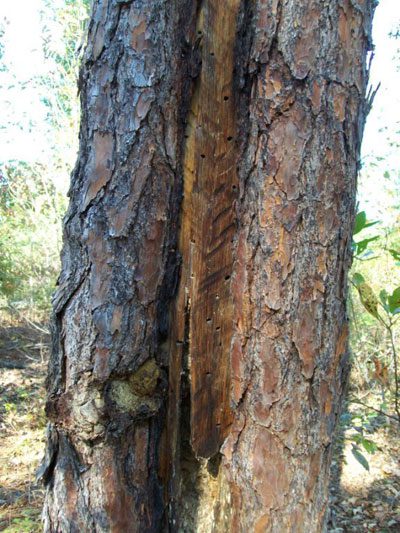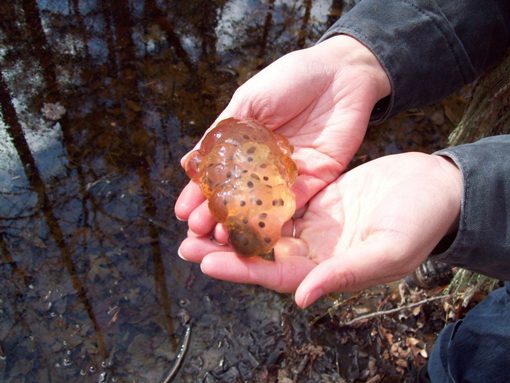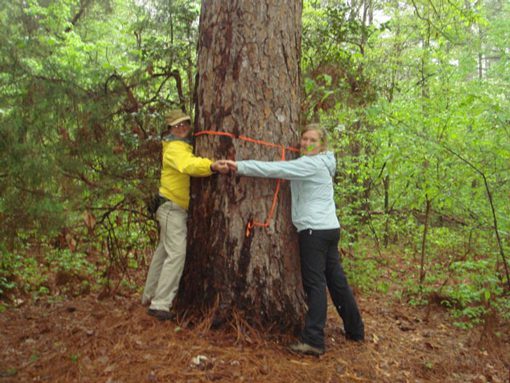One-of-a-kind longleaf pine forest now protected

The largest known stand of old-growth Piedmont longleaf pine remaining in the state will be preserved as an education forest, protected from development. The LandTrust for Central North Carolina and the N.C. Zoological Park last month completed their purchase of the 116-acre property in northern Montgomery County.
Longleaf pine forests historically covered more than 90 million acres all along the southeastern United States, but have been reduced to only 3 percent of that acreage. This newly preserved tract is a one-of-a-kind forest, with some trees nearly 200 years old. Many of the trees here have been “boxed” and bear the scars from the turpentine industry of the past, when tar and resin from the trees were used on naval ships. Longleaf pine forests are a unique ecosystem with a whole suite of endemic species that call them home. The tree holds a special place in state lore, with the official North Carolina State Toast beginning, “Here’s to the land of the long leaf pine …”
 On Dec. 30, the zoo acquired half of the property, and the land trust purchased the other half. The zoo obtained grant funds for this partial purchase through the N.C. Natural Heritage Trust Fund, which preserves significant natural areas and rare species across the state. The land trust was able to obtain interest-free loan funding through the Norcross Wildlife Foundation to buy the remaining acreage and will continue to work with the zoo to find grant funding to pay off the loan for eventual zoo ownership of the entire tract.
On Dec. 30, the zoo acquired half of the property, and the land trust purchased the other half. The zoo obtained grant funds for this partial purchase through the N.C. Natural Heritage Trust Fund, which preserves significant natural areas and rare species across the state. The land trust was able to obtain interest-free loan funding through the Norcross Wildlife Foundation to buy the remaining acreage and will continue to work with the zoo to find grant funding to pay off the loan for eventual zoo ownership of the entire tract.
In summer 2010, a private donor offered funds to buy a two-year option to purchase the tract from family members who inherited it from the late Margaret Nichols. Ms. Nichols lived on the property until her death, and she loved the longleaf pines and would not let them be cut down. She was a naturalist and knew the importance of longleaf forests for wildlife. A relative recounted that when she was young, a very old man told her he remembered a time when he could leave that property and ride all the way to Fayetteville and never be out from under the shade of a longleaf pine.
Longleaf is classically thought of as a Sandhills or Coastal Plain ecosystem, but the trees also grow in the Piedmont, in more clay-like soils. While the understory of a healthy longleaf pine forest in the Sandhills is dominated by wiregrass, here in the Piedmont a suite of native grasses is found there, including Indian grass, big blue stem and little blue stem. Many species of colorful asters and legumes grow in both places. Conservation partners hope to collect seed from these trees to restore this ecotype on other lands in the Uwharrie region.
The zoo and the land trust, with other conservation partners, will gradually restore the site, which has been fire-suppressed for generations. This will be done slowly and carefully, according to a specific forest management plan to protect the trees and enhance the habitat. Those restoration efforts will open the understory to sunlight, which may result in re-emergence of rare plants that could be in the seedbank, such as yellow-fringed orchids. The zoo plans to develop hiking trails and hopes to partner with local schools to develop an outdoor environmental education program here. Some interesting creatures who call this special place home are spotted salamanders, timber rattlesnakes and Kentucky warblers.
The land trust and the zoo will host a hike on the property March 10. For more information about this project, or to learn about how you can restore longleaf on your land, contact the land trust at landtrust@landtrustcnc.org or at 704-647-0302. You may also contact the N.C. Zoo for more information: Rod.Hackney@nczoo.org, or 336-879-7204.
Disclosure: Crystal Cockman works for the LandTrust of Central North Carolina as its Uwharrie conservation specialist.

